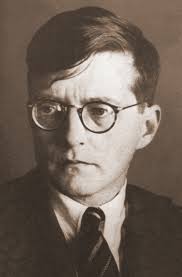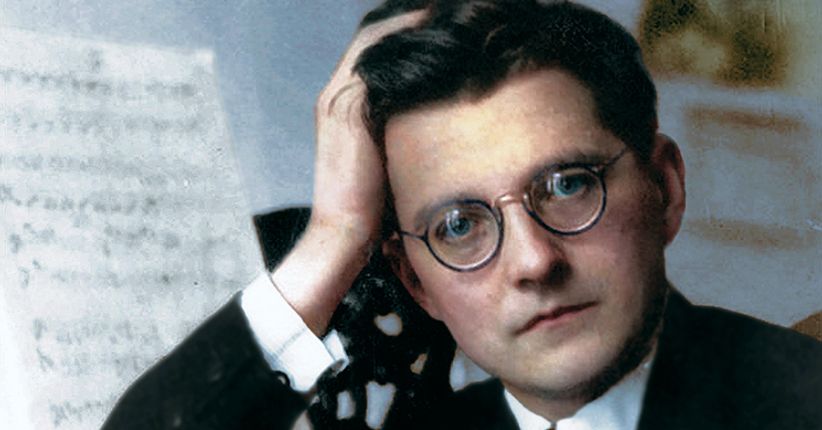Dmitri Shostakovich: A Complete Biography
Introduction
Dmitri Shostakovich (1906–1975) stands as one of the most significant and complex composers of the 20th century. A prolific creator whose music mirrored the turbulent history of Soviet Russia, Shostakovich produced symphonies, chamber music, concertos, film scores, and operas that remain widely performed and debated. His artistic life was marked by extraordinary highs and devastating lows, as he navigated the treacherous waters of artistic expression under a totalitarian regime. Known for his sharp irony, emotional intensity, and technical mastery, Shostakovich’s legacy continues to resonate with audiences and scholars alike.

Childhood
Dmitri Dmitriyevich Shostakovich was born on September 25, 1906, in Saint Petersburg, then capital of the Russian Empire. His father, Dmitri Boleslavovich Shostakovich, was a chemist and a cultured man of Polish ancestry, while his mother, Sofiya Vasilievna Kokoulina, was a pianist and music teacher who first introduced her son to the piano.
From an early age, Dmitri exhibited exceptional musical ability. He began piano lessons with his mother at the age of nine and showed remarkable talent in improvisation and composition. After the Russian Revolution in 1917, the young Shostakovich found himself in a city ravaged by civil unrest and starvation. Despite the chaos, he composed his first piano pieces and absorbed the diverse musical influences of his time—Russian folk songs, Western classical music, and revolutionary propaganda songs.
Youth
In 1919, at just thirteen, Shostakovich was admitted to the Petrograd Conservatory, where he studied piano under Leonid Nikolayev and composition with Maximilian Steinberg, a disciple of Rimsky-Korsakov. Although he was a gifted pianist, his true passion lay in composition. His early works revealed a sophisticated understanding of counterpoint and structure, infused with a uniquely sarcastic and modern voice.
He gained national attention with his Symphony No. 1, composed at the age of 19 as his graduation piece. Premiered in 1926 by the Leningrad Philharmonic, the symphony was an astonishing success and established Shostakovich as a rising star in Soviet music. The piece blended neoclassical elements with bold orchestration and sardonic wit, traits that would become hallmarks of his style.
Throughout the 1920s, Shostakovich was fascinated by modernism and avant-garde experiments. He worked as a cinema pianist and composed music for silent films, absorbing the rhythms of the street and popular culture.
Adulthood
The 1930s brought both triumph and terror for Shostakovich. His opera Lady Macbeth of the Mtsensk District (1934) was initially celebrated but later denounced in 1936 in Pravda, the Soviet newspaper, under the headline “Muddle Instead of Music.” The article, likely instigated by Stalin himself, accused the opera of formalism and elitism. This public condemnation placed Shostakovich’s life and career in grave danger.
In response, he withdrew his Fourth Symphony (which would not be premiered until 1961) and composed the Fifth Symphony (1937), subtitled “A Soviet Artist’s Practical Creative Reply to Just Criticism.” Ostensibly a patriotic work, it was deeply ambiguous, filled with mournful themes and coded resistance. According to Elizabeth Wilson and Solomon Volkov’s controversial Testimony, many listeners heard the triumphant finale as ironic—a veiled protest against tyranny.
Shostakovich’s adult life was punctuated by cycles of favor and fear. He joined the Communist Party in 1960, likely under duress, and was forced to publicly support state policies he privately abhorred. His letters and memoirs, along with the recollections of friends, suggest a man who lived in a state of internal conflict—devoted to his art, yet constantly under surveillance.
Despite his difficult circumstances, Shostakovich continued to compose prolifically: 15 symphonies, 15 string quartets, multiple concertos, chamber works, and film music. He became a cultural figurehead, both domestically and abroad, and taught at the Moscow Conservatory, mentoring a generation of Soviet composers.
Major Compositions
Shostakovich’s compositional output spans an extraordinary range of genres and emotions. Among his most significant works are:
- Symphony No. 1 in F minor, Op. 10 (1926): His brilliant debut.
- Symphony No. 5 in D minor, Op. 47 (1937): A haunting response to Stalinist censorship.
- String Quartet No. 8 in C minor, Op. 110 (1960): A deeply autobiographical and tragic chamber piece.
- Symphony No. 7 “Leningrad”, Op. 60 (1941): Written during the Nazi siege, it became a symbol of Soviet resilience.
- Piano Concerto No. 2 in F major, Op. 102 (1957): A cheerful, energetic work written for his son Maxim.
- Symphony No. 13 “Babi Yar”, Op. 113 (1962): Based on Yevgeny Yevtushenko’s poem, it condemned Soviet anti-Semitism and censorship.
His music often reflects coded messages of resistance, grief, and satire, layered beneath seemingly conformist surfaces. Laurel Fay notes that while Shostakovich’s political views remain contested, his music clearly channels the pain and contradictions of Soviet life.
Death
Shostakovich suffered from ill health throughout his later years, including chronic pain, polio complications, and heart problems. He died on August 9, 1975, in Moscow, at the age of 68. His funeral was attended by thousands, and he was buried at Novodevichy Cemetery, among Russia’s greatest artists.
Despite decades of official honors, Shostakovich died a man haunted by fear, isolation, and disillusionment. Yet he left behind one of the most powerful musical legacies of the 20th century—an artistic chronicle of conscience, tragedy, irony, and survival.
Conclusion
Dmitri Shostakovich was more than a composer—he was a witness, a survivor, and a silent resistor in one of history’s most repressive regimes. His music speaks across time, layered with meaning, sorrow, defiance, and truth. Whether hailed as a loyal Soviet artist or a veiled dissident, Shostakovich’s genius lay in his ability to transform personal and collective suffering into enduring works of art.
His symphonies echo the bombs of war and the cries of the oppressed. His quartets murmur secrets whispered in the dark. Through every note, Shostakovich reminds us of the resilience of the human spirit in the face of oppression—and the power of music to endure when words fail.

Comments are closed